- Home
- Kim Newman
The Hound Of The D’urbervilles
The Hound Of The D’urbervilles Read online
Professor
MORIARTY
THE HOUND OF THE
D’URBERVILLES
KIM NEWMAN
TITAN BOOKS
Professor Moriarty: The Hound of the D’Urbervilles
Print edition: ISBN: 9780857682833
E-book edition ISBN: 9780857686015
Published by
Titan Books
A division of Titan Publishing Group Ltd
144 Southwark St
London
SE1 0UP
First edition: September 2011
3 5 7 9 10 8 6 4 2
This is a work of fiction. Names, characters, places, and incidents either are the product of the author’s imagination or are used fictitiously, and any resemblance to actual persons, living or dead, business establishments, events, or locales is entirely coincidental. The publisher does not have any control over and does not assume any responsibility for author or third-party websites or their content.
Kim Newman asserts the moral right to be identified as the author of this work.
Copyright © 2011 Kim Newman
Visit our website: www.titanbooks.com
* * *
Did you enjoy this book? We love to hear from our readers. Please email us at [email protected] or write to us at Reader Feedback at the above address.
* * *
To receive advance information, news, competitions, and exclusive Titan offers online, please visit our website: www.titanbooks.com
No part of this publication may be reproduced, stored in a retrieval system, or transmitted, in any form or by any means without the prior written permission of the publisher, nor be otherwise circulated in any form of binding or cover other than that in which it is published and without a similar condition being imposed on the subsequent purchaser.
A CIP catalogue record for this title is available from the British Library.
Printed and bound in the United States.
For Barry Forshaw
Also by Kim Newman from Titan Books:
ANNO DRACULA
ANNO DRACULA: THE BLOODY RED BARON (APRIL 2012)
PREFACE
Even during the global crisis which broke more famous financial institutions, the failure of Box Brothers was noisy. The private bank collapsed shortly after the arrest of Dame Philomela Box, Chief Executive Officer, on charges of fraudulent dealing. A warrant was also issued for her nephew, Colin Box. Press speculation that he had done a runner ended when his body was discovered in the boot of a burned-out Volvo on Havengore Island, Essex. Autopsy determined that Colin’s head had been sawn off and used as a football. No one has ever been charged with his murder, or those of two other bank officers found dead in the next six weeks.
Only after the CEO’s indictment could Box Brothers be called in print what it was, and always had been: the criminals’ bank. Founded in 1869, the family-owned business maintained premises in Moorgate, Gibraltar and Bermuda [1]. For nearly a century and a half, Box Brothers provided financial services (no questions asked) to law-breakers great and small. Their client list ranged from underworld gangs (and, from the 1960s on, terrorist cells) with enormous turnovers to conceal to lowly smash-and-grab merchants with bloodied cash deposits to make. As their still-live website euphemistically has it, Box Brothers’ twenty-first-century speciality was ‘offshore wealth management’ – which is to say, getting the loot out of the country. The house’s oldest service was the most confidential and secure storage facility in the City of London – which is to say, a box to keep the jewels or paintings (or, in several cases, people) out of sight until the heat died down.
At the time of writing, the Moorgate premises remain under twenty-four-hour armed guard as suits and countersuits regarding access to the safety deposit vault (where it is rumoured the trophies of several famous, unsolved thefts are to be found) are argued. Or not... since it seems the management were not above dipping into the till to pay for Dame Philomela’s passion for airships or Colin’s white rap label [2]. Lawrence and Harrington Box, the founders, would have been aghast at the decline from the standards set in their day. Their simple philosophy was scrupulous honesty. Clients were expected to set aside their habitual larceny in dealing with the bank, just as the brothers made no moral judgement about business brought to them.
Before the crash, my dealings with Box Brothers were limited.
While my A History of Silence: Victorian Crimes Against and By Women [3] was in proof, my cat went missing. When I left for work, Crippen was locked in the flat. When I came home, the flat was still locked but Crippen was gone. The next day, my Female Serial Killers seminar was interrupted by a special messenger making a recorded delivery of a lawyers’ letter which suggested I delete any mention of Box Brothers from my forthcoming book. I first read ‘if the offending material is not removed, no further legal action will be taken’ as a mistyping. Then I saw ‘no further legal action’ did not mean ‘no further action’. When I got home, Crippen was back, with a triangle snipped out of her ear. The offending reference consisted of a footnote in a chapter about nineteenth-century brothelkeepers [4]. I made the edit.
When Box Brothers fell, several hastily researched articles about the bank’s history appeared in the papers. Evidently, the bank no longer had the wherewithal to put pressure on journalists and historians. I assumed – not without Schadenfreude – that their in-house catnappers were busy avoiding larger, more dangerous animals. Widows and orphans and pension funds and small businessmen with accounts in Iceland run screaming to the government when their savings are in peril, but the sort of customer who banks with Box Brothers takes more direct action.
In July, 2009, I took a call in my office at Birkbeck College from Philomela Box’s private secretary, Henry Hassan.
‘Ms Temple, are you free to come into Dame Philomela’s office this afternoon for a consultation?’
‘On what?’ I asked.
‘Historical documents,’ he said.
Considering Crippen’s snipped ear, I was of a mind to tell Hassan where to file his historical documents. And to tell him it should be Professor Temple.
But it had been a boring week. The long summer vac was filled with faculty meetings about budget cuts. The only interesting PhD student I was supervising [5] was off working as a tour guide in Barcelona. So I agreed to visit the City.
Dame Philomela’s office was not in Holloway Prison. She was still in Moorgate. Windows smashed by an angry mob were boarded up. The building was guarded both by uniformed policemen and helmeted private security. A faction of anti-capitalist enthusiasts mounted a cosplay protest which had thinned over the months since the credit crunch started to bite. Ghost-masked young folks wore loose pyjamas decorated with broad arrows, and dragged about Jacob Marley chains of ledgers and strongboxes. Their slogans suggested they didn’t see Box Brothers as more criminal than any other bank.
Mr Hassan, the last loyal retainer, met me in a cavernous, dim reception room. Dustsheets were draped over the furniture. Loose wires showed where computers had once been plumbed in. Unfaded oblongs on the plush wallpaper marked the spots formerly taken by pictures which had walked out with suddenly unemployed staff. A cleaner had been arrested legging it down Silk Street with two Vernets and a Greuze in a Budgens ‘Bag for Life’.
I was ushered into an inner office.
A tall, thin woman came out from behind a desk to shake my hand. A red light flashed on her ankle bracelet.
‘Henry, get us espresso... if the plods haven’t taken the last of it along with every bloody thing else,’ said Dame Philomela. ‘I’ll have gin in mine, but the professor won’t, I’m sure.’
Mr Hassan retreated, backing o
ut like a nervous courtier.
Dame Philomela’s office was hung with airship mobiles. She had a framed print of The Hindenburg disaster. On bookshelves where most bankers display leatherbound tomes of financial lore she had a complete set of Jeffrey Archer first editions. She was evidently a bit of a fan: in a photograph, she and Lord Archer wore matching flying helmets and her smile showed half a skull. I assumed he’d give her tips on how to get by in prison.
Dame Philomela was sixty. From experience with postgraduate students, I knew at once she was a functioning anorexic. She wore a tailored dark suit with a short skirt. Her long, straight black hair had a white streak – she must dye twice for the effect. Her only items of visible jewellery were a lapel-brooch in the shape of a dirigible and a discreet silver nose-stud.
The newspapers had made a lot out of Dame Philomela’s resemblance to a Disney cartoon villainess. I wondered if she didn’t cultivate the effect.
Her computer was gone. The Fraud Squad were going through thousands of Zeppelin .jpgs and .avis while looking for evidence. A brass-hinged wooden box stood on her desk where the monitor would have been.
‘Sit,’ she ordered.
I complied. She stood by her desk, long fingers on the box.
‘Do you know the legal status of items left undisturbed in safety deposit for, oh, eighty years?’
‘No,’ I said.
‘Neither do I,’ Dame Philomela admitted. ‘That was Colin’s area. Bloody idiot. Anyway, I can tell you what we do with them here... it hardly matters any more. We use a master key our depositors don’t know about to open the box, and divvy up the contents if obviously valuable... or stick them in a sub-basement junk room if not. That started before my day. A necessity, with new clients coming in and needing secure space. There’s a waiting list – or, rather, there was – for our vault. Rather than go to the trouble of getting new boxes put in, it was easier to clear out lost causes and move on. Contrary to what you read in those awful rags, it’s not all crown jewels and wodges of banknotes. If you want a giggle, I’ve a collection of musty old letters used to blackmail people who’ve been dead so long no one could possibly care about their sad old secrets. Have you heard of Sebastian Moran?’
‘Yes,’ I said. ‘He was a minor Victorian. A soldier and explorer, big-game hunter. Implicated in something called the “Bagatelle Card Club Scandal”. He was caught cheating by a man called Adair, who was later shot dead. Moran was arrested for the murder, but didn’t hang... no one is quite sure how he got off, though he did go to prison for a few years. The only reason he’s remembered is because the Adair case was the first solved, after the socalled “great hiatus”, by...’
‘Good, yes, fine, you know your scoundrels,’ Dame Philomela interrupted. ‘Now, don’t go on, woman. Showing off is all it is. Anybody can Wikipedia this stuff now, so there’s no need to have it all up in your head to be spat out again. Very unattractive, it is. I’ve no earthly interest in the old dead bastard, anyway. Except for this.’
She took the box from her desk and gave it to me.
On the lid was a brass plate, inscribed: ‘Col. Sebastian Moran, 1st Bangalore Pioneers, Conduit Street.’
‘It’s not locked,’ said Dame Philomela.
Inside was a manuscript. Two separate sheafs, which I guessed were different drafts of the same material: a longhand version, neatly written on lined paper, and a typescript, with crossings-out and emendations in ink.
‘Is it authentic?’ she asked.
‘I couldn’t possibly say without closer examination.’
Dame Philomela looked annoyed. That cracked her tight face and brought out her inner hag.
‘Well then, you silly bitch, examine closely,’ said Dame Philomela.
I thought about leaving.
Mr Hassan came back with the espresso. It was criminally strong. I decided to stay, for a while.
‘I want to know if there’s money in this,’ said Dame Philomela. ‘And how quickly I can get it.’
‘I’ll have to take this away and have it looked at. Besides analysing the text, tests can be done on the paper and ink to get an estimate of the age.’
‘I should cocoa,’ snorted Dame Philomela. ‘This stays here. You can read it in the next room. Then tell me what I’ve got. And how much it’s worth.’
I took the typescript out of the tin, and riffled through it. It was a book-length manuscript, with numbered pages, divided into chapters. There was no title page, or author credit.
On the first few pages, someone had carefully inked out a recurring name and written in ‘Mahoney’ above the black patches. Then, the same hand scribbled ‘sod it, can’t be bothered!’ in the margin, and gave up on the pretence of concealing identity.
The name someone had thought briefly to hide was Moriarty.
‘Professor Moriarty?’ I asked.
‘Yes,’ Dame Philomela said. ‘I dare say you’ve heard of him.’
‘A client of Box Brothers?’
‘One of the originals. So was Moran.’
‘He left a safety-deposit box?’
‘Yes. Inside was a pornographic deck of Edwardian playing cards I’ve put on eBay, a string of pearls I’m keeping for my old age, and this. Now, do you want to read it or not?’
I did. I have. And, with minimal editorial alteration, this is it.
Dame Philomela didn’t and doesn’t care if it’s an authentic memoir, though she was keen to establish that if it’s fake, it’s at least an old fake. No living author will come forward to claim royalties.
Tests were done. I confidently assert that this is the work of Colonel Sebastian Moran. Vocabulary and syntax are consistent with his published books, Heavy Game of the Western Himalayas (1881) and Three Months in the Jungle (1884)... though his tone in these memoirs is considerably less guarded. He incidentally settles a long-standing academic dispute by identifying himself as the anonymous author of My Nine Nights in a Harem (1879) [6]. The undated longhand pages were written between 1880 and 1910. Different paper and inks indicate the author worked intermittently, writing separate chapters over twenty years. It is probable sections were drafted in Prince Town Prison, where Moran was resident for some time after 1894.
Internal evidence suggests Moran intended to publish, perhaps inspired by the commercial success of others whose memoirs – many overlapping events he recounts – had already appeared. Of course, those authors did not confess to capital crimes in print, an issue which might have given Moran second thoughts. He was considering publication as late as 1923–4, when the typescript was made. We cannot definitively identify the person or persons who typed his manuscript for him [7], but can be sure it was not Moran – though the annotations are in his handwriting.
Without a research project which Dame Philomela, who is now serving a seven-year sentence in Askham Grange open prison, is unwilling to fund, a full assessment of the veracity of Moran’s memoirs is impossible. Given that the author characterises himself as a cheat, a liar, a villain and a murderer, we are entitled to ask whether he was as dishonest in autobiography as he was in everything else. However, it seems he felt – perhaps later in life – a compulsion to make an accurate record. Few in his time thought Sebastian Moran anything but a rogue, but his famous associate saw straight away that he was what we might now diagnose as an adrenalin junkie. When age kept him from more active pursuits, perhaps writing a book which could lead to him being hanged was a substitute for the thrill of hunting tigers or breaking laws. However, he was in healthy middle age when he began writing up the crimes of Professor Moriarty – and was in fact busy helping commit them. Where dates, names and places that can be checked are given, Moran is a reliable historian – more so than some of his less crooked contemporaries.
On the text: I have made few corrections to Moran’s spelling or syntax, except for consistency. He did go to Eton, after all. Some contemporaries took him for a fool, but he was an educated, well-read, intelligent man and articulate when he chose to be. The ma
nuscript is overrun with hyphens and dashes which are pruned to some extent in the typescript, and have been pruned further by me. Moran held to nineteenth-century conventions (‘cow-boy’, ‘gas-light’, ‘were-wolf’) which would distract the modern eye. I have resisted a temptation to cut digressions or offhand references which raise tantalising matters upon which no further information is available. A thorough search of the vaults of Box Brothers has turned up no other Moran manuscripts – so we’re unlikely to find out more about the ‘Mystery of the Essex Werewolf’ or the ‘Affair of the Mountaineer’s Bum’.
Perhaps surprisingly, given his candour, Moran exercised a degree of self-censorship. Make no mistake, the Victorians could be as foul-mouthed as we are. Moran won an Army–Navy swearing contest held in Bombay in 1875, outlasting ‘the vilest bosun in the Fleet’ by a full half-hour of obscene profanity without repetition or hesitation, but with a great deal of deviation. However, in his manuscript, he blots out swear words. Some pages look like heavily redacted CIA intelligence reports. The typescript is clearer, but still tactful (‘c--t’, ‘f--k’, etc.). Where necessary, I have kept that archaism.
I have chosen not to include several passages which would prove offensive or stultifying to modern readers. Some material (dealing with race, sex or politics) exists in manuscript but not typescript, suggesting Moran himself had second thoughts. As a sometime pornographer, Moran’s accounts of sexual encounters run to dozens of detailed, unedifying pages; he writes about big-game hunting, horse-racing and card games in an identical manner. Where not directly germane to the narrative, I have trimmed paragraphs on these subjects. They are only of academic interest and this academic wasn’t especially interested – Heavy Game of the Western Himalayas has been out of print for over a hundred years for good reason. If Moran had been only a tiger hunter and libertine, he would be forgotten. As he admits, if he is remembered at all, it is because he was Moriarty’s lieutenant. In this edition of his memoirs, I have concentrated on that association, sparing the reader aspects of his life and times which now make Moran seem more appalling a human being than his inclinations towards larceny, duplicity and homicide.

 The Bloody Red Baron
The Bloody Red Baron Anno Dracula
Anno Dracula Dracula Cha Cha Cha
Dracula Cha Cha Cha Anno Dracula 1999
Anno Dracula 1999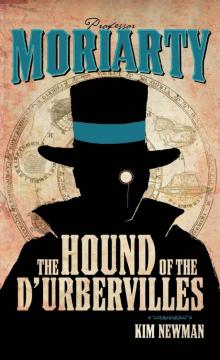 Moriarty: The Hound of the D'Urbervilles
Moriarty: The Hound of the D'Urbervilles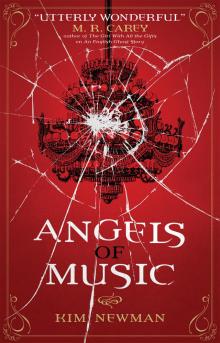 Angels of Music
Angels of Music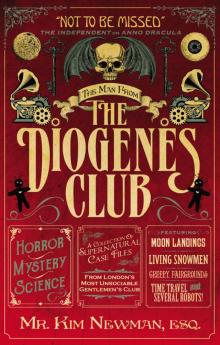 The Man From the Diogenes Club
The Man From the Diogenes Club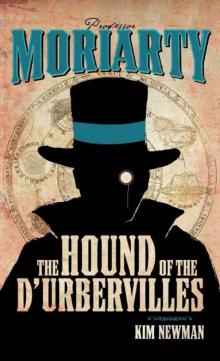 Professor Moriarty: The Hound Of The D’urbervilles
Professor Moriarty: The Hound Of The D’urbervilles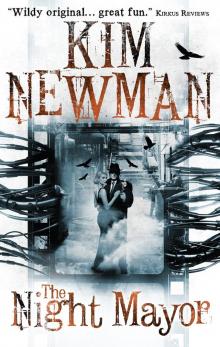 The Night Mayor
The Night Mayor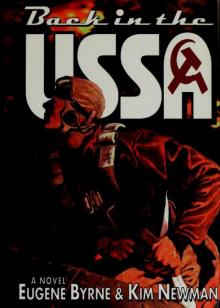 Back in the USSA
Back in the USSA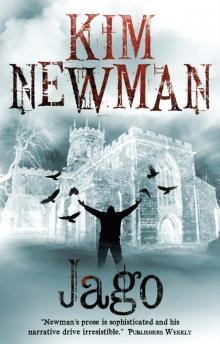 Jago
Jago Gaslight Arcanum: Uncanny Tales of Sherlock Holmes
Gaslight Arcanum: Uncanny Tales of Sherlock Holmes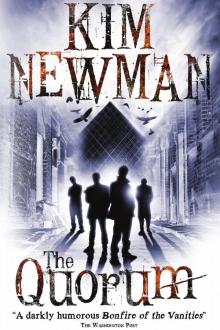 The Quorum
The Quorum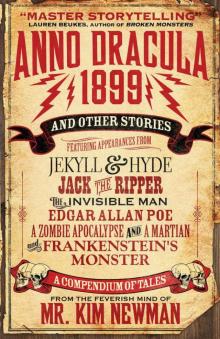 Anno Dracula 1899 and Other Stories
Anno Dracula 1899 and Other Stories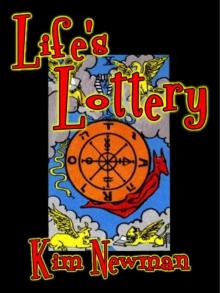 Life's Lottery
Life's Lottery The Secrets of Drearcliff Grange School
The Secrets of Drearcliff Grange School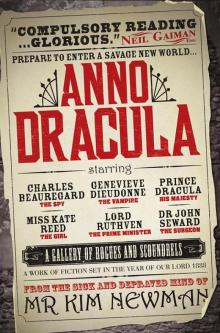 Anno Dracula ad-1
Anno Dracula ad-1 The Bloody Red Baron: 1918 ad-2
The Bloody Red Baron: 1918 ad-2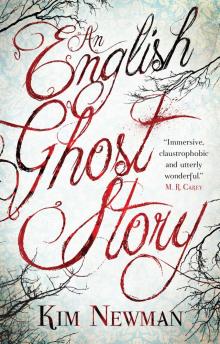 An English Ghost Story
An English Ghost Story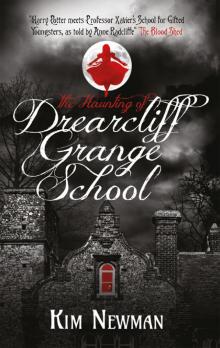 The Haunting of Drearcliff Grange School
The Haunting of Drearcliff Grange School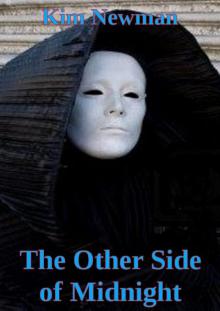 The Other Side of Midnight
The Other Side of Midnight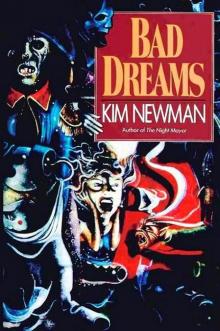 Bad Dreams
Bad Dreams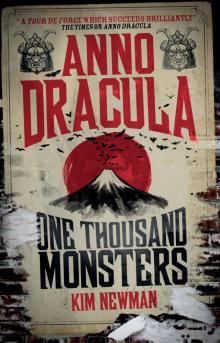 Anno Dracula--One Thousand Monsters
Anno Dracula--One Thousand Monsters The Hound Of The D’urbervilles
The Hound Of The D’urbervilles The Bloody Red Baron: Anno Dracula 1918
The Bloody Red Baron: Anno Dracula 1918